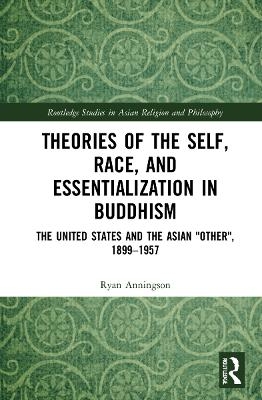
Theories of the Self, Race, and Essentialization in Buddhism
The United States and the Asian "Other", 1899–1957
Seiten
2021
Routledge (Verlag)
978-0-367-62233-6 (ISBN)
Routledge (Verlag)
978-0-367-62233-6 (ISBN)
This book analyzes Buddhist discussions of the Aryan myth and scientific racism and the ways in which this conversation reshaped Buddhism in the United States, and globally.
The book traces the development of notions of Aryanism in Buddhism through Buddhist publications from 1899-1957, focusing on this so-called "yellow peril," or historical racist views in the United States of an Asian "other." During this time period in America, the Aryan myth was considered to be scientific fact, and Buddhists were able to capitalize on this idea throughout a global publishing network of books, magazines, and academic work which helped to transform the presentation of Buddhism into the "Aryan religion." Following narratives regarding colonialism and the development of the Aryan myth, Buddhists challenged these dominant tropes: they combined emic discussions about the "Aryan" myth and comparisons of Buddhism and science, in order to disprove colonial tropes of "Western" dominance, and suggest that Buddhism represented a superior tradition in world historical development. The author argues that this presentation of a Buddhist tradition of superiority helped to create space for Buddhism within the American religious landscape.
The book will be of interest to academics working on Buddhism, race and religion, and American religious history.
The book traces the development of notions of Aryanism in Buddhism through Buddhist publications from 1899-1957, focusing on this so-called "yellow peril," or historical racist views in the United States of an Asian "other." During this time period in America, the Aryan myth was considered to be scientific fact, and Buddhists were able to capitalize on this idea throughout a global publishing network of books, magazines, and academic work which helped to transform the presentation of Buddhism into the "Aryan religion." Following narratives regarding colonialism and the development of the Aryan myth, Buddhists challenged these dominant tropes: they combined emic discussions about the "Aryan" myth and comparisons of Buddhism and science, in order to disprove colonial tropes of "Western" dominance, and suggest that Buddhism represented a superior tradition in world historical development. The author argues that this presentation of a Buddhist tradition of superiority helped to create space for Buddhism within the American religious landscape.
The book will be of interest to academics working on Buddhism, race and religion, and American religious history.
Ryan Anningson is Flora Jane Baker Postdoctoral Fellow at Queen’s University in Kingston, Ontario, Canada.
Introduction Chapter 1 – The Search for Aryan Statues Chapter 2 – Racecraft in America Chapter 3 – Academia and Aryan Ideology Chapter 4 – Bioracism Across Asia Chapter 5 – Aryan Buddhism as Humanity’s Foundation Chapter 6 – The Shin Boom and Zen Aryanism Chapter 7 – Metaphysical Buddhism and the Religion of Joy Chapter 8 – Buddhism and the Evolution of Racecraft Chapter 9 – An Aryan Buddhist Utopia Conclusion
| Erscheinungsdatum | 02.08.2021 |
|---|---|
| Reihe/Serie | Routledge Studies in Asian Religion and Philosophy |
| Verlagsort | London |
| Sprache | englisch |
| Maße | 156 x 234 mm |
| Gewicht | 453 g |
| Themenwelt | Geisteswissenschaften ► Philosophie |
| Geisteswissenschaften ► Religion / Theologie ► Buddhismus | |
| Sozialwissenschaften ► Soziologie ► Spezielle Soziologien | |
| ISBN-10 | 0-367-62233-5 / 0367622335 |
| ISBN-13 | 978-0-367-62233-6 / 9780367622336 |
| Zustand | Neuware |
| Haben Sie eine Frage zum Produkt? |
Mehr entdecken
aus dem Bereich
aus dem Bereich
Philosophische Betrachtungen
Buch | Softcover (2024)
Aufbau TB (Verlag)
CHF 20,95


